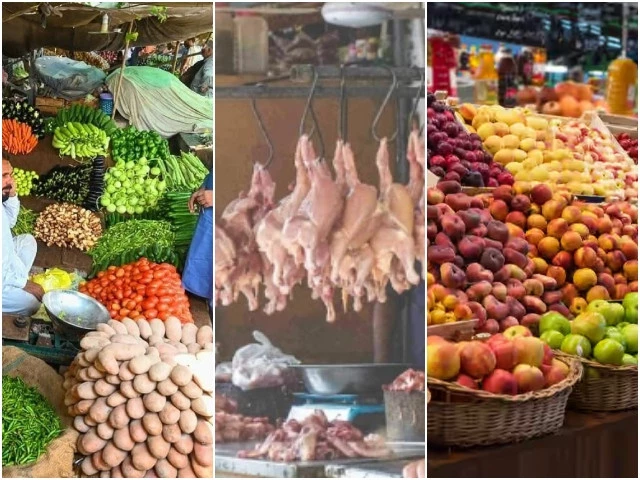LAHORE:
Lahore residents are facing steep food prices as floods across Punjab disrupt supplies and an alleged cartel in the poultry sector keeps chicken rates artificially high. Vegetables, fruits, and meat are being sold well above official benchmarks, leaving households struggling to afford basic essentials despite daily government notifications.
Market watchers say an undeclared cartel in the poultry sector has resurfaced in Lahore, keeping official chicken rates unchanged for nearly a month despite shifts in supply and demand.
The last revision was issued on Aug. 11, when district authorities fixed live chicken at Rs397–411 per kilogram and chicken meat at Rs595 per kilogram. Since then, the administration has continued to notify the same prices daily. On the ground, however, enforcement remains weak.
Retailers in various parts of the city are reportedly refusing to sell live birds at official rates. Where available, prices range between Rs500 and Rs530 per kilogram for live chicken, and Rs630 to Rs750 for chicken meat — significantly higher than the government’s benchmark.
The gap between official lists and market realities has renewed criticism of governance and oversight. Observers argue that elected representatives and senior officials, including deputy commissioners and the newly created Price Control and Commodity Management Department, have failed to break the nexus between sellers and suppliers. Similar pricing gaps have also been reported in the beef and mutton markets.
Also Read: Double whammy as Punjab battles disease outbreaks amid worsening floods
At the same time, vegetable prices have climbed sharply, compounded by flood disruptions across Punjab that have reduced supplies and damaged crop quality. Vendors at Lahore’s wholesale markets say shortages of key staples are driving up costs for consumers.
Potatoes, for instance, were officially listed between Rs55 and Rs85 per kilogram depending on grade, but were sold for as much as Rs150 per kilogram. Tomatoes, fixed at Rs127–140 per kilogram, fetched Rs200–240. Onions, listed at Rs70–75 per kilogram, reached as high as Rs120.
Other essentials showed similar disparities. Garlic, priced at Rs200–210, was sold at Rs300 per kilogram, while ginger, fixed at Rs430–450, was offered between Rs600 and Rs800. Cucumbers, brinjals, spinach, and bitter gourd all traded well above official rates.
Fruit markets also recorded steep differences. Apples, listed at Rs170–305 per kilogram, were sold for up to Rs400; guavas for Rs300, against an official Rs205–215; and bananas that should have cost Rs220 per dozen reached Rs300. Premium dates were sold at between Rs800 and Rs2,000 per kilogram — far above the Rs470–500 range announced by the district administration.
The widening gap between notified and market rates has added to household pressures as families struggle with rising food inflation. For now, with weak enforcement and limited political oversight, residents continue to bear the brunt of unchecked price manipulation.
“Every time I go to the market, the price is different — and always higher than the official list. Families like mine are forced to cut back on even basic meals,” said Ayesha Khan, a resident of Township.
“The government announces rates, but no one follows them. Sellers charge whatever they want, and ordinary people have no choice but to pay,” said Muhammad Imran, a shopkeeper and father of three in Green Town’s main bazaar.

